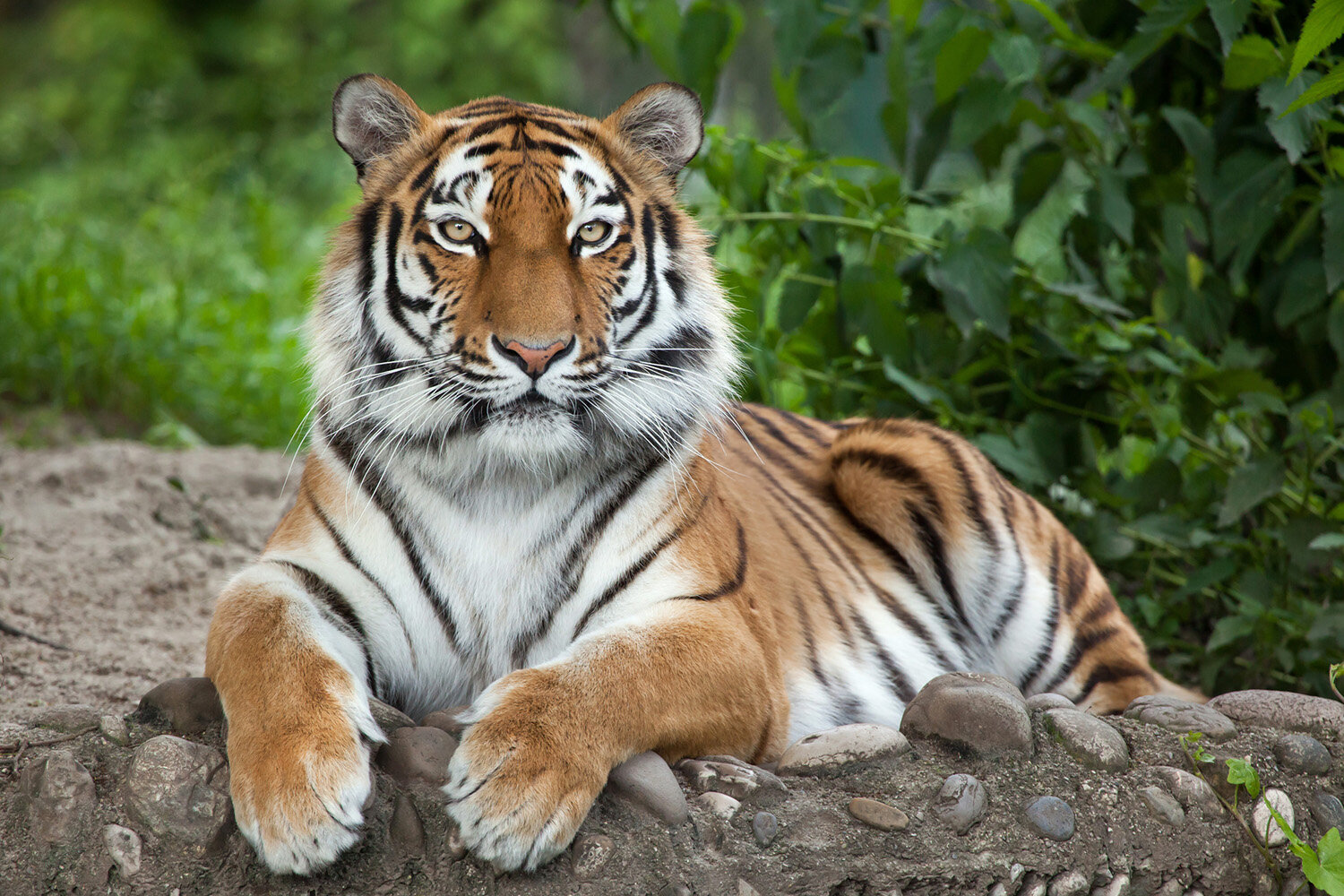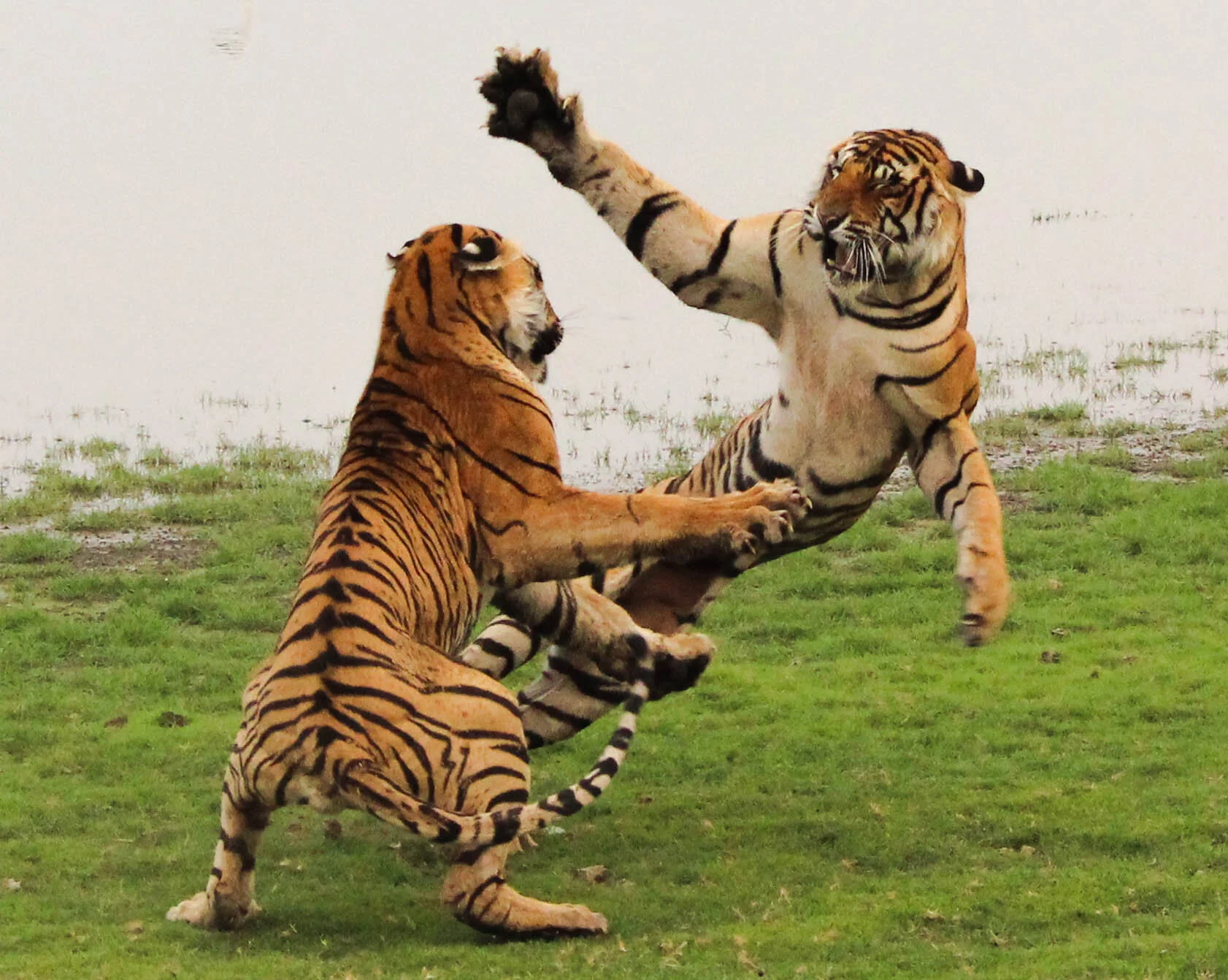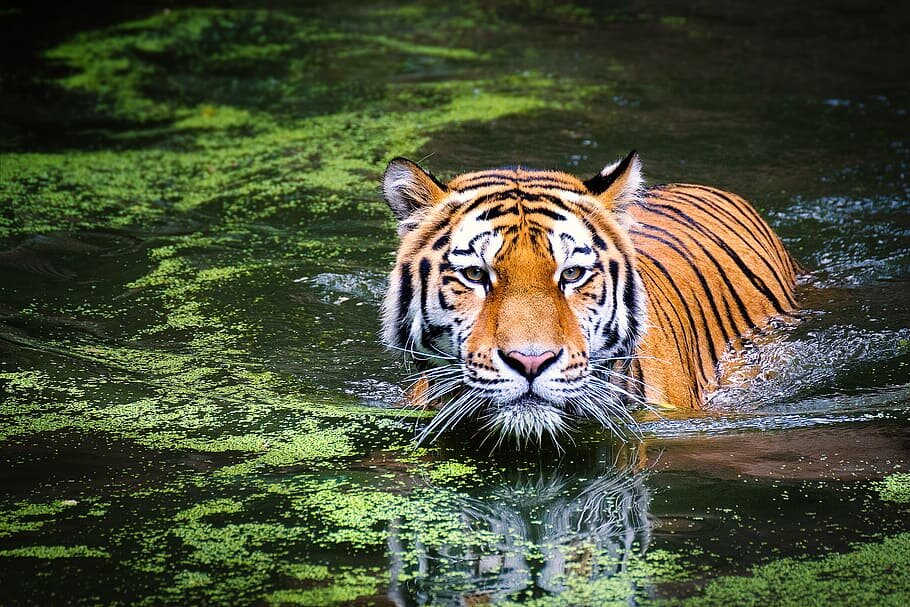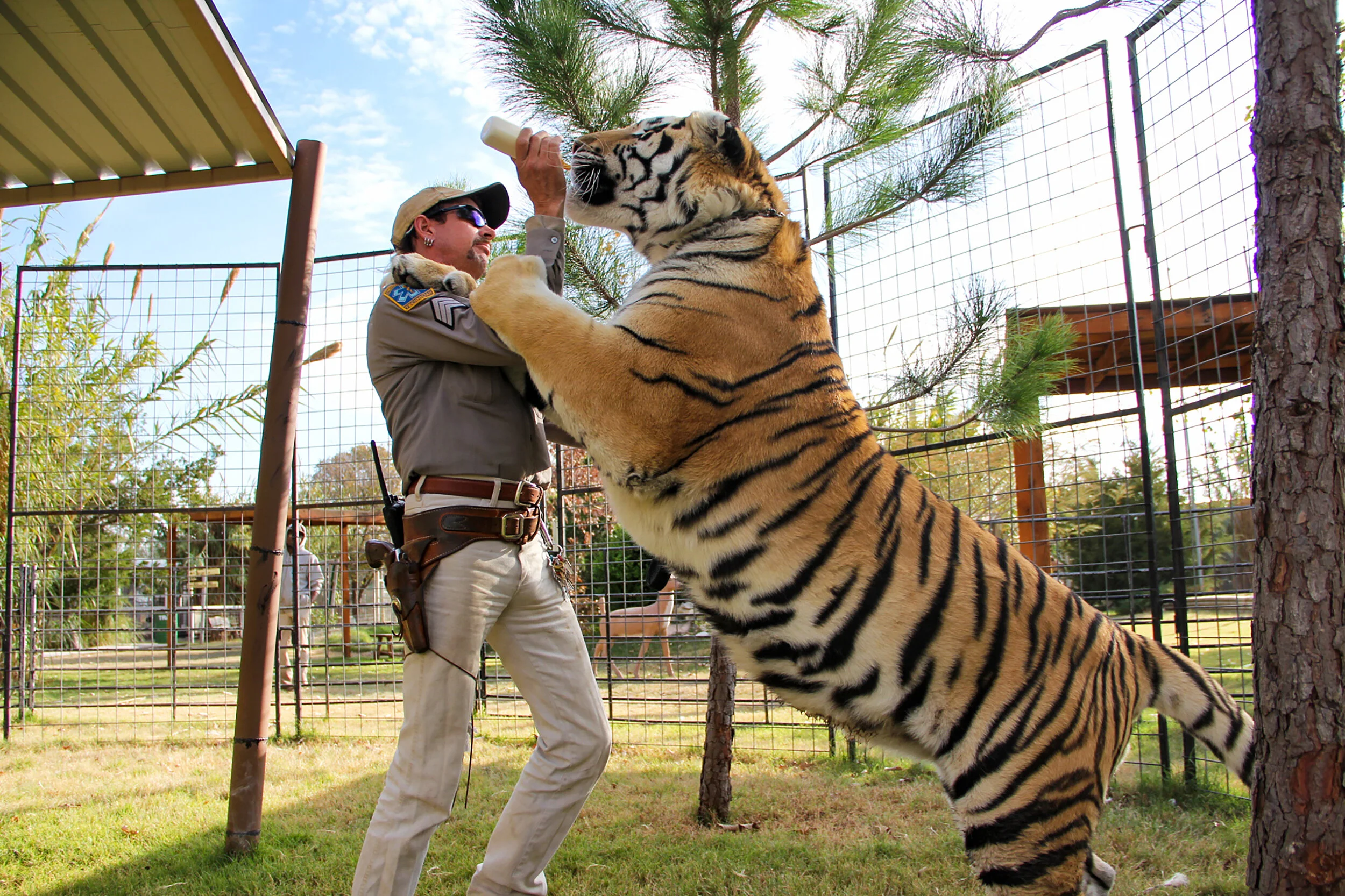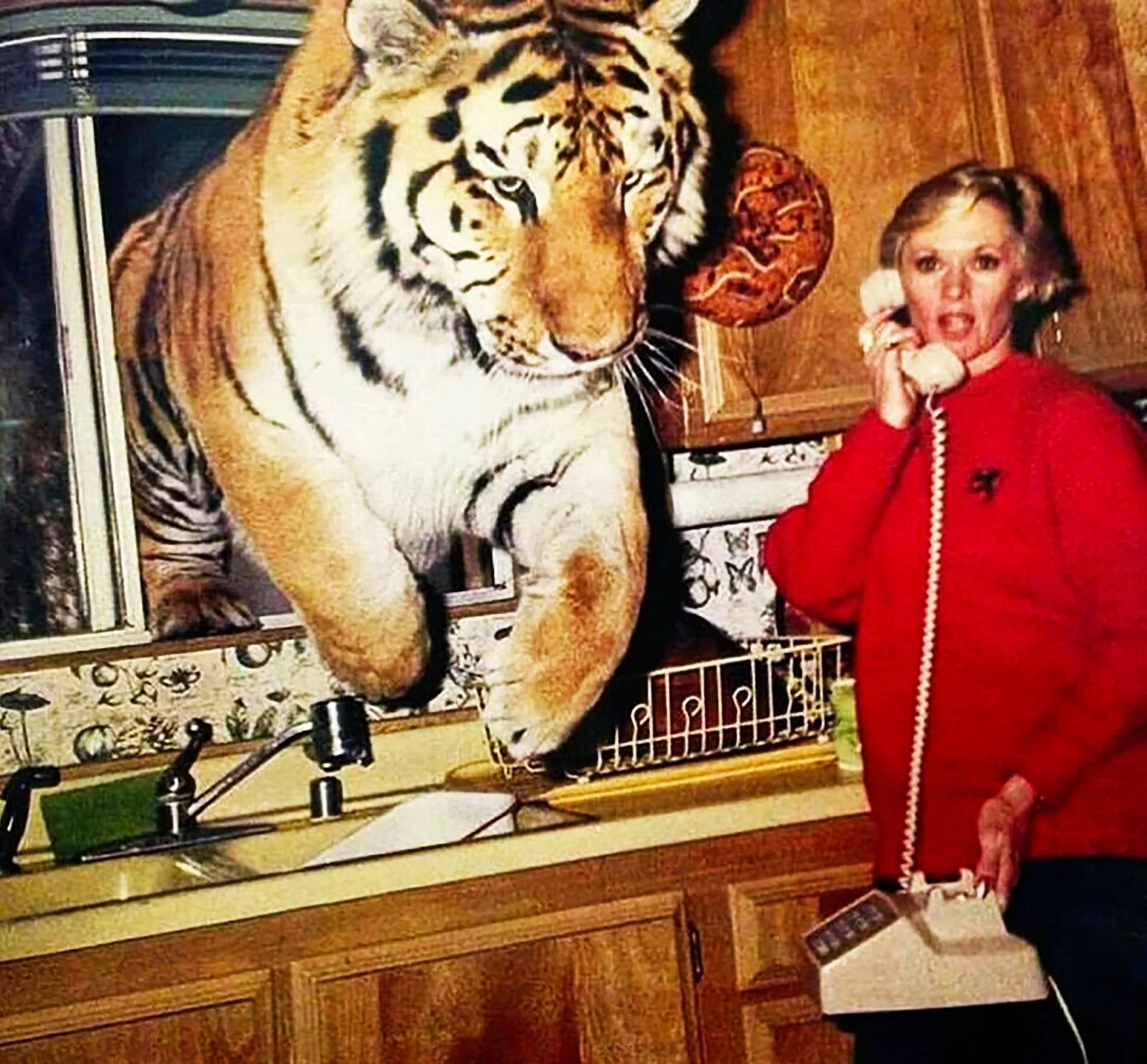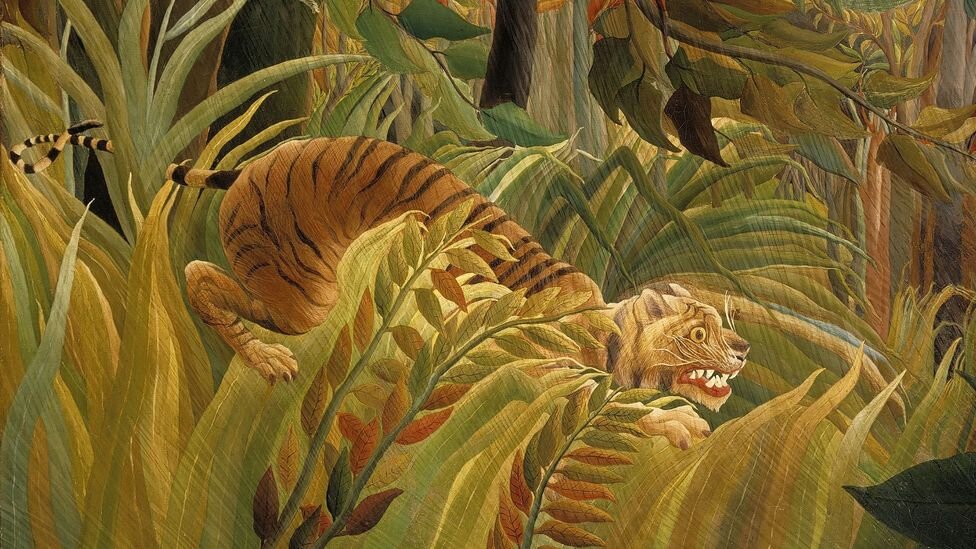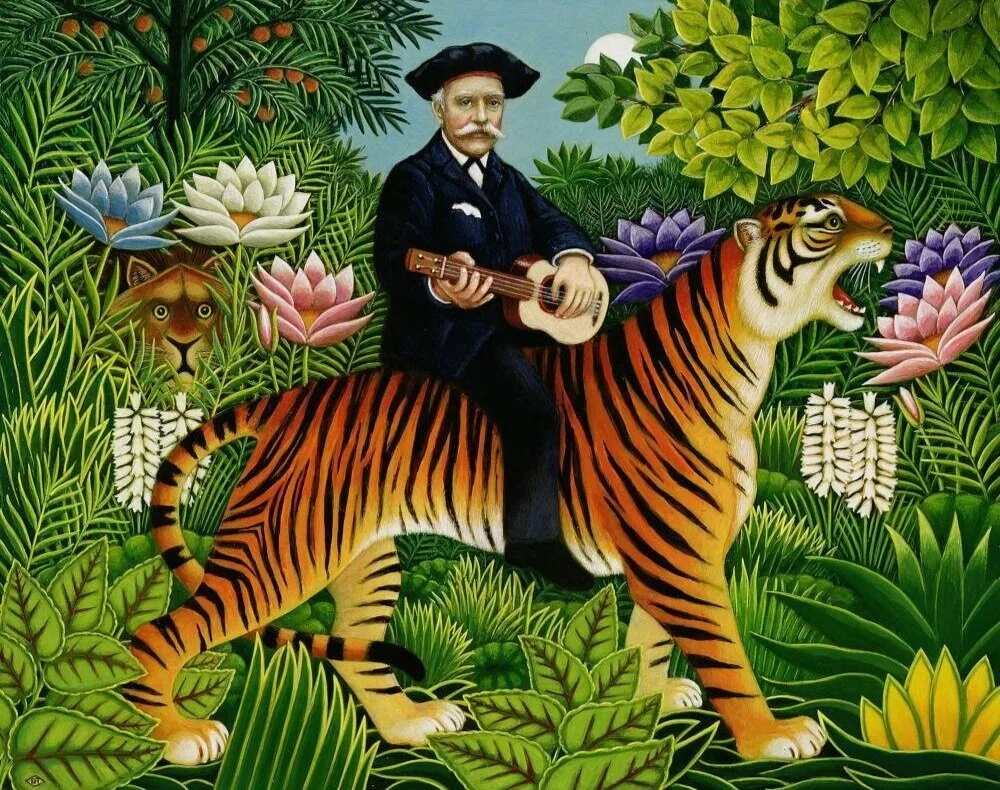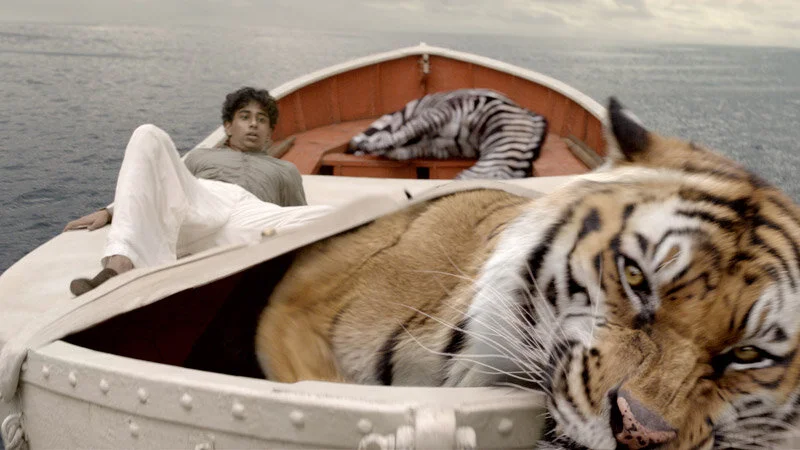By The Landlord
“The violinist is that peculiarly human phenomenon distilled to a rare potency - half tiger, half poet.” – Yehudi Menuhin
"He who rides a tiger finds it difficult to dismount." – Chinese proverb
“A tiger does not shout its tigritude, it acts.” – Wole Soyinka
“The tiger springs in the new year. Us he devours.” – T. S. Eliot
“What immortal hand or eye
Could frame thy fearful symmetry?
In what distant deeps or skies
Burnt the fire of thine eyes?
… What the hammer? what the chain?
In what furnace was thy brain?
What the anvil? what dread grasp
Dare its deadly terrors clasp?
When the stars threw down their spears,
And watered heaven with their tears,
Did he smile his work to see?
Did he who made the Lamb make thee?” – William Blake
Is there any living creature more perfect, beautiful, deadly, frightening, intimidating, unpredictable, mesmerising, mysterious, mythological or utterly magnificent? A tiger's huge face, evolved as camouflage, is a spiral of scary warpaint, its body a heavy mass of speed-stripe muscle, its tail a thick rope of dangerous mood swing, its claws are massive meat hooks that move in a flash of orange and red. And the looks it gives any other living are anything from intimidatingly vicious to utterly indifferent. It has presence, in abundance, something almost supernatural.
I once locked eyes with a tiger in Longleat Safari Park. Not exactly the jungle, and needless to say I was safely in a van behind glass, but I was only around 6 feet away. And it just sat there, on the grass, staring back. For at least five minutes it did not blink or move its gaze away from mine, not for a second. Eventually I had to give in, and lower my gaze in intimidated reverence. It was a profound experience. Both physically and mentally, it felt like I'd encountered a being of utter superiority.
As myth or monster, pet or predator, symbol of beauty, death or power, tigers fire the imagination with their looks and behaviour. But how do they spring out of the musical jungle?
Cats, including the bigger lions are a song topic that's come up in the past, but tigers somehow hid more in the musical undergrowth, and yet there are many songs in which they feature, either in the literal or metaphorical form, and possibly in greater numbers than there are now sadly tigers living in the wild.
Handbags at dawn: female cubs playing in Ranthambore Tiger Reserve, India
Tigers are very much part the language and human identity. They feature in many songs, poems, books and films as much for what they represent, and what they are, and what they do to the human response. In idioms they represent power and potency, wildness and unpredictability. Tiger sweat or milk is liquor or high strength. A “tiger team” is a group of skilled professionals assembled to test the potential weaknesses of a company's security system. To ride a tiger is to take extreme risks. And a paper tiger is a person, country or organisation who seem powerful but it is all just a colourful front. Another sort of paper tiger is that cereal eating sugar-loving hyper enthusiast Tony:
They are indeed … great!
The word tiger comes from the Middle English tigre, Old English tigras derived from Old French tigre, from Latin tigris, which in turn came from Classical Greek τίγρις ‘tigris' which may have come from the Persian tiger, meaning 'pointed or sharp', and the Avestan word tigrhi for arrow. It’s all very consistently tigerish.
The species Panthera tigris is the largest of the living cat species part of the panthera group of lions, jaguars and leopards. Varying in colour from a deep dark orange to white, there are sub-species from the Bengal to the Siberian and South China, and several extinct variations including the Caspian. One of it’s distinctive features compared to many cats is that it is completely happy bathing or hunting in water.
Tigers are, unusually, completely at home in water
While wild tigers, of which there now only 3,000 left are in south Asia, there are many more in captivity. Tigers have gripped the human imagination for thousands of years, colourful myth, legend and literature. The tiger is one of the 12 animals of the Chinese zodiac, and the white tiger one of the Four Symbols of the Chinese constellations. The Manchu considered the Siberian tiger as "Hu Lin," the king. In Hinduism, Shiva's favourite garb is tiger skin, in southern India the god Ayyappan is always depicted surrounded by them, and in Greco-Roman tradition, the god Dionysus, who simply has to look cool, is sometimes shown to be riding one. Having tigers around you has associations of power and potency.
But that can sometimes go horribly wrong …
Tall order: Joe Exotic, one of the key subjects of the documentary series TIger King
Siegfried and Roy. Someone’s going to get it in the neck …
But of course that association has had its many downsides. What is it about tigers that attract a certain kind of controlling, manipulative sociopath? Tigers have been almost hunted to extinction in a history of heartless human machismo and cowardice, and many where they bred in captivity, ostensibly under the PR skin of conservation, are covered in scandal, whether that be the most recent documentaries around America’s high-profile characters such as Joe Exotic, and even the Thai tiger temple in Kanchanaburi province, west of Bangkok, run by Buddhist monks, supposed to be a conservation safari, but forced to close a few years ago due to scandalous revelations over trading of body parts and experimentation.
Thai tiger temple in Kanchanaburi. Not so friendly after all.
Tippi Hedron, the actress best for being pecked by birds in the Hitchcock film, famously had many pet tigers and lions, and her daughter Melanie Griffiths and more got used to them around the house. Perhaps they have been treated far better than some others, but all I can say is the litter try must have been a bit of a handful.
What’s for breakfast, Tippi?
Tigers have they huge paw marks all over centuries of literature, poetry, film and song. William Blake’s poem from Songs of Innocence and Experience has proven to a very potent work, from its reference to religion to being infused into 20th-century song lyrics.
The painter Henri Rousseau was of course obsessed with tigers, his famous painting Tiger in a Tropical Storm (Surprised!) (1891) very much firing up the Victorian imagination.
Henri Rousseau’s Tiger in a Tropical Storm (Surprised!) (1891)
Henri Rousseau depicted: ‘He who rides a tiger finds it difficult to dismount.’
And more recently, Yann Martel’s tiger in his 2001 novel The Life of Pi, where the narrator is shipwrecked for months, drifting in a small boat, somehow avoids being eaten by the other survivor, a large Bengal tiger, also portrayed in Ang Lee’s feature film. When they both finally reach land, are they finally friends? No, the tiger in this story is not Tony, the friendly Frosties cereal eater, but a far more powerful presence, because he is unsentimental, as the narrator describes when he walks off down the beach, without even turning his head to acknowledge their experience together:
A boatful: Yann Martel’s The Life of Pi, and the film directed by Ang Lee
“Dare I say I miss him? I do. I miss him. I still see him in my dreams. They are nightmares mostly, but nightmares tinged with love. Such is the strangeness of the human heart. … I still cannot understand how he could abandon me so unceremoniously, without any sort of goodbye, without looking back even once. That pain is like an axe that chops at my heart.”
But that’s tigers for you. So how do they come together in song form? When in conjunction with humans, hopefully they will all come together as magically, and harmlessly, as this:
Watch for the final moment …
So then, this week’s fearless tiger keeper, sharpening the claws of choice, but also no doubt purring with delight at what is put in front of him, is the superb Severin! Please place your tiger-inspired songs in comments below, for deadline at 11pm British Summer Time on Monday, for playlists published next week. Grr….eat!
New to comment? It is quick and easy. You just need to login to Disqus once. All is explained in About/FAQs ...
Fancy a turn behind the pumps at The Song Bar? Care to choose a playlist from songs nominated and write something about it? Then feel free to contact The Song Bar here, or try the usual email address. Also please follow us social media: Song Bar Twitter, Song Bar Facebook. Song Bar YouTube, and Song Bar Instagram. Please subscribe, follow and share.
Song Bar is non-profit and is simply about sharing great music. We don’t do clickbait or advertisements. Please make any donation to help keep the Bar running:

